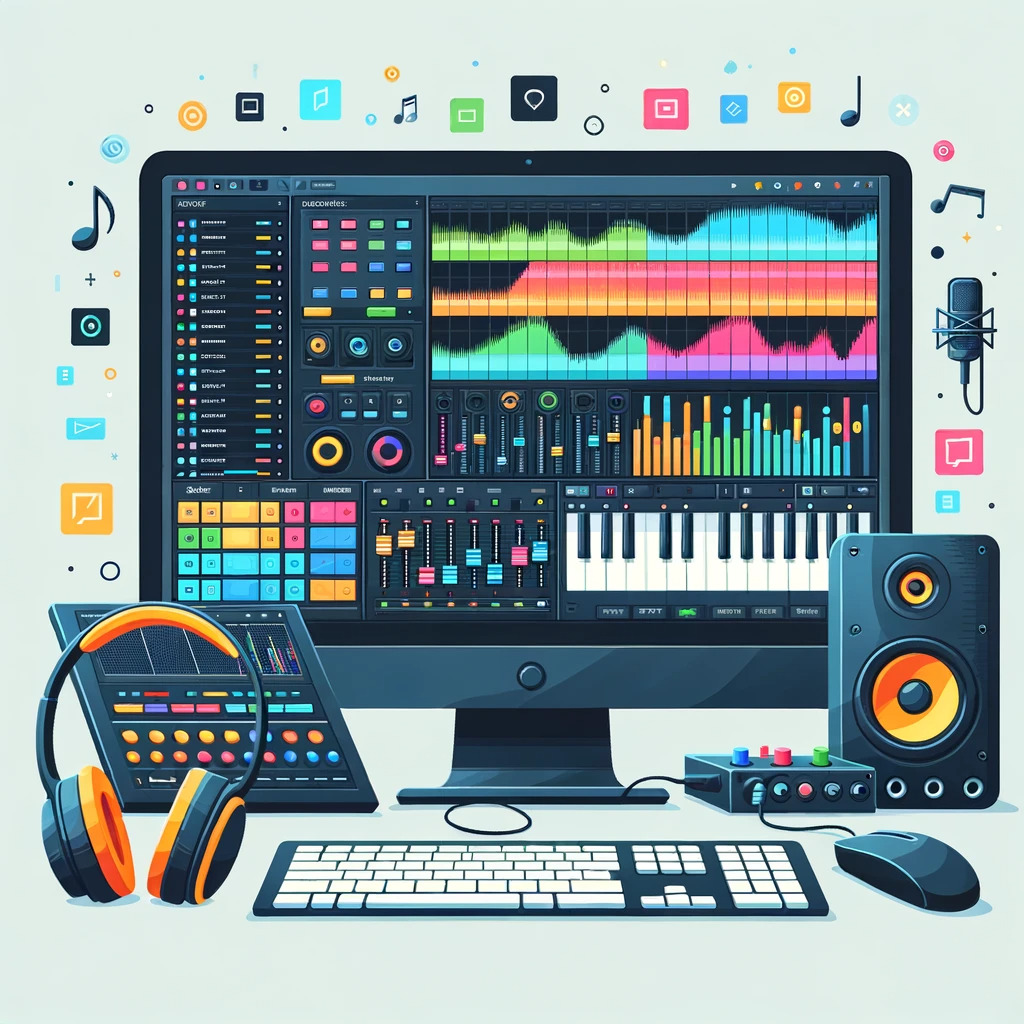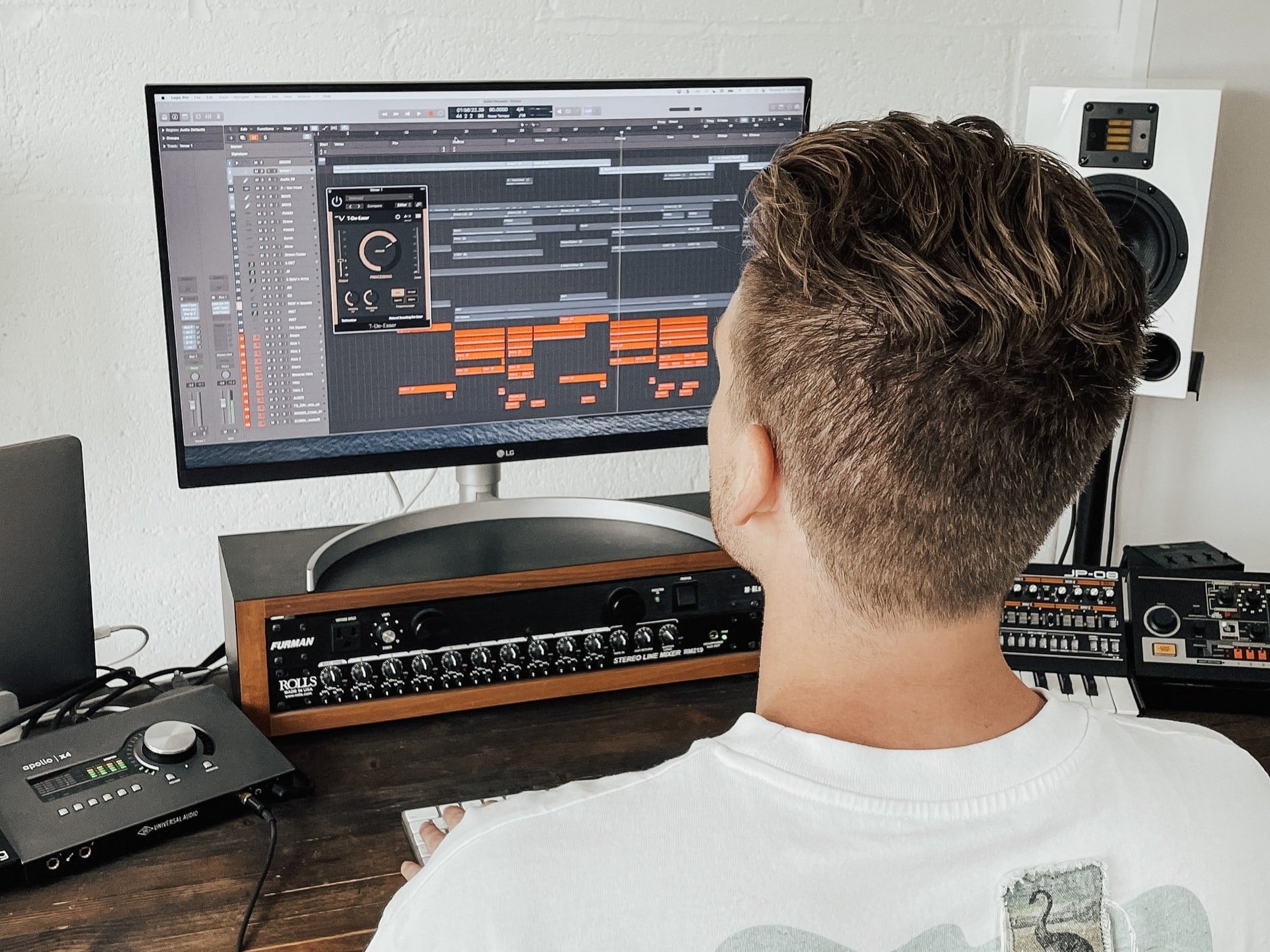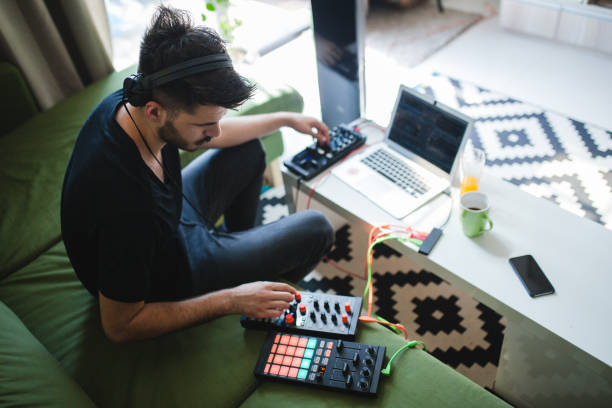From bedroom producers to Grammy winners, computer-based music creation has revolutionized the way music is made. What was once only possible in professional studios is now accessible to anyone with a laptop and creativity. This Beginner’s Guide will walk you through everything you need to start making music on your computer at home.
Whether you’re looking to produce the next hit single or just want to experiment with creative expression, computer-based music production puts professional-grade tools at your fingertips. With the right software, some basic equipment, and a willingness to learn, anyone can start crafting original tunes from the comfort of home. This guide will teach you the fundamentals.
Let’s dive in and unlock your musical potential using the power of computer music technology!
Essential Hardware for Making Music
Choosing the Right Computer
When beginning your journey into music production, it is crucial to select a computer with the necessary specifications to run your digital audio workstation (DAW) smoothly. A computer with a powerful processor and sufficient RAM is essential for handling large audio projects and running multiple applications simultaneously. While many producers opt for Apple products, both Mac and PC systems can be suitable for music production, depending on your preferred DAW and workflow.
Essential Peripheral Devices
In addition to a reliable computer, there are several other essential hardware components needed for making music on your computer. These include:
- Microphones: A quality microphone is necessary for recording vocals, acoustic instruments, and other sound sources. There are various types of microphones available, such as dynamic, condenser, and ribbon models, each suited for different applications.
- Audio Interface: An audio interface is a critical piece of equipment for capturing high-quality recordings from your microphone and other instruments. Additionally, it helps improve sound playback for your monitors and headphones while providing low-latency performance. Check out some of the best beginner audio interfaces under different price ranges to find the one that suits your needs and budget.
- Headphones: A good pair of headphones is essential for monitoring your recordings, mixing, and mastering your tracks. Closed-back headphones are recommended for recording, while open-back models are preferable for mixing and mastering.
- Studio Monitors: While headphones are crucial, having a pair of studio monitors assists in achieving a more accurate representation of your mix and mastering decisions. It is vital to invest in monitors designed specifically for music production as they provide a flat frequency response.
- MIDI Controllers: MIDI controllers are devices that transmit MIDI data to your DAW, allowing you to control virtual instruments, such as synthesizers, drum machines, and samplers. Some popular types of MIDI controllers include keyboard controllers, pad controllers, and control surfaces.
- Additional Instruments: Depending on the genre you’re working in, you may want to invest in instruments such as percussion, brass (like trumpets), or stringed instruments to add character to your music. Keep in mind some instruments can be emulated using virtual instruments or sample libraries, which may be a more cost-effective solution.
Remember that the required hardware will depend on your personal preferences, musical goals, and budget. Don’t be afraid to start with the essentials and gradually upgrade your equipment as you progress in your music production journey.
Choosing the Right Digital Audio Workstation (DAW)
When starting to make music on your computer, one of the most important decisions is selecting the right Digital Audio Workstation (DAW). A DAW is software that allows you to record, edit, and produce audio on your computer. It provides a central interface where you can arrange and mix tracks, add effects, edit audio clips, automate parameters, and master your songs.
This section will guide you through some considerations and options for both beginners and advanced users.
DAWs for Beginners
For those new to music production, it’s essential to pick a DAW that is user-friendly and offers a smooth learning curve. Here are a few popular beginner-friendly DAWs:
- Ableton Live: Known for its intuitive interface and powerful features, Ableton Live is a top choice for many dance music producers. The Intro version offers an affordable introduction to this robust program.
- Garageband: If you’re a Mac user, Garageband is a free, easy-to-use DAW that comes pre-installed on macOS devices. It offers a simple interface and enough features for beginners to create and produce music.
- FL Studio: Another beginner-friendly choice, FL Studio offers an intuitive interface and is especially popular among electronic music producers due to its accessible design and workflow.
DAWs for Advanced Users
As you progress in your music production journey, you may find yourself exploring more advanced options. Here are a few DAWs tailored towards experienced users:
- Logic Pro X: An upgrade from Garageband, Logic Pro X is a powerful and comprehensive option for Mac users. It boasts a sleek interface and an extensive array of features that cater to professionals and advanced users alike.
- Pro Tools: As the industry standard for music production and engineering, Pro Tools offers advanced editing and mixing capabilities. However, its learning curve can be steep, making it more suitable for professionals and experienced users.
- Reaper: Reaper is a highly customizable DAW that is known for its flexibility and functionality. It operates at a lower price point compared to other advanced DAWs, making it an attractive choice for experienced users seeking a powerful solution without breaking the bank.
Regardless of your experience level, there is a DAW out there that will meet your needs and help you create and produce music on your computer. Experiment with different options and find the one that best aligns with your goals and workflow.
Getting Started with Music Production
Recording and Editing Tracks
To begin making music on your computer, the first essential skill you need to acquire is how to record and edit tracks. Tracks represent the individual parts of a song, such as vocals, drums, or any other instrument. They are usually recorded separately and then edited for arrangement and quality.
To record a track, you’ll need music production software, often called DAW, which provides the necessary tools for recording and editing.
When recording tracks, make sure to use a high-quality microphone for the best results. If you’re planning to include live recordings of instruments or vocals, it’s essential to invest in a proper audio interface to capture the sound accurately.
After recording the tracks, you can then move on to editing. Some common editing processes include cutting and trimming unwanted parts, quantizing MIDI notes, applying time stretching or pitch shifting, and adding effects or processing such as EQ or compression.
Mixing and Mastering Tracks
Once your tracks are recorded and edited, the next step is mixing and mastering. Mixing involves adjusting the volume levels, panning, and adding effects like reverb or delay to individual tracks. This process helps create a balanced arrangement and ensures each instrument complements the other components of the mix.
Begin by adjusting volume levels to find the right balance for each instrument. Then, experiment with panning to create a sense of space within the stereo field. While mixing, make use of EQ to enhance or reduce specific frequencies and compression to control the overall dynamics of the track.
Mastering is the final stage in music production, focusing on polishing the overall sound and ensuring consistency across different playback systems. Key mastering processes include applying limiting, EQ, and stereo enhancement to achieve the desired loudness, tonal balance, and stereo image of your track.
In summary, getting started with music production involves recording and editing tracks, followed by mixing and mastering to create a polished and professional sound. Invest in the right software and equipment while exploring essential techniques in each stage to successfully produce your own music on your computer.
Creating Your Own Sound
Understanding MIDI and Audio Samples
MIDI (Musical Instrument Digital Interface) and audio samples are the building blocks of creating music on a computer. MIDI allows you to communicate with virtual instruments and software synthesizers, enabling you to produce various sounds. Audio samples, on the other hand, are pre-recorded audio files that can be incorporated into your music making setup, such as drum loops or vocal samples.
To start working with MIDI, you’ll need a MIDI editor, which can be found in most Digital Audio Workstations (DAWs). This editor allows you to create, edit, and arrange MIDI data, triggering different virtual instruments to produce sounds.
Audio samples can be imported into your DAW, where they can be further edited and manipulated to fit your music. Both MIDI and audio samples are vital components when it comes to designing your unique sound.
Sound Design and Synthesizers
Synthesizers and virtual instruments play a significant role in shaping the character of your music. These tools facilitate the creation of a wide variety of sounds, ranging from realistic instrument simulations to experimental effects. Synthesizers come in many forms, including software plugins and standalone hardware devices.
Sound design is the process of selecting, manipulating, and combining various sounds and synthesizers to create a unique sonic landscape. This can involve blending multiple layers of MIDI-driven virtual instruments and incorporating audio samples, such as drum loops or vocals.
When designing your sound, it’s essential to experiment with various synthesizers, effects, and audio samples to create a distinct and personal style. Make sure to learn the nuances of each synthesizer, as this will help you achieve a better control over the generated sounds. Additionally, don’t be afraid to utilize unconventional techniques to craft your signature sound, as this can set you apart from other producers.
Remember, the key to creating your unique sound is to combine the knowledge of MIDI, audio samples, and synthesizers with your creativity and willingness to experiment. By doing so, you’ll be well on your way to producing compelling and memorable music on your computer.
Final Thoughts and Tips
When diving into the world of computer music production, remember that practice is essential. As with any creative pursuit, the more time and effort you invest, the better your skills will become. Stay consistent and dedicated to the craft.
For beginners, exploring free software is a great starting point. There is a variety of free options available that can help you learn the basics and develop your skills without breaking the bank. As you progress, you can invest in more advanced tools and equipment, gradually building your setup on a budget.
YouTube tutorials are a valuable resource when learning to create music on your computer. There is a wealth of content available, ranging from beginner guides to more advanced techniques. Don’t be afraid to ask questions and seek advice from more experienced producers, as they can provide valuable tips and insights.
In addition to practice and learning from others, it’s essential to experiment with different styles, genres, and techniques. This will not only help you find your unique musical style but also broaden your skillset.
Remember that, at the end of the day, creating music should be enjoyable and fulfilling. Stay true to your passions and keep an open mind about the creative process. With dedication, practice, and the right resources, you’ll be on your way to becoming a successful computer music producer.
⚠ Article Disclaimer
The above article is sponsored content any opinions expressed in this article are those of the author and not necessarily reflect the views of CTN News








